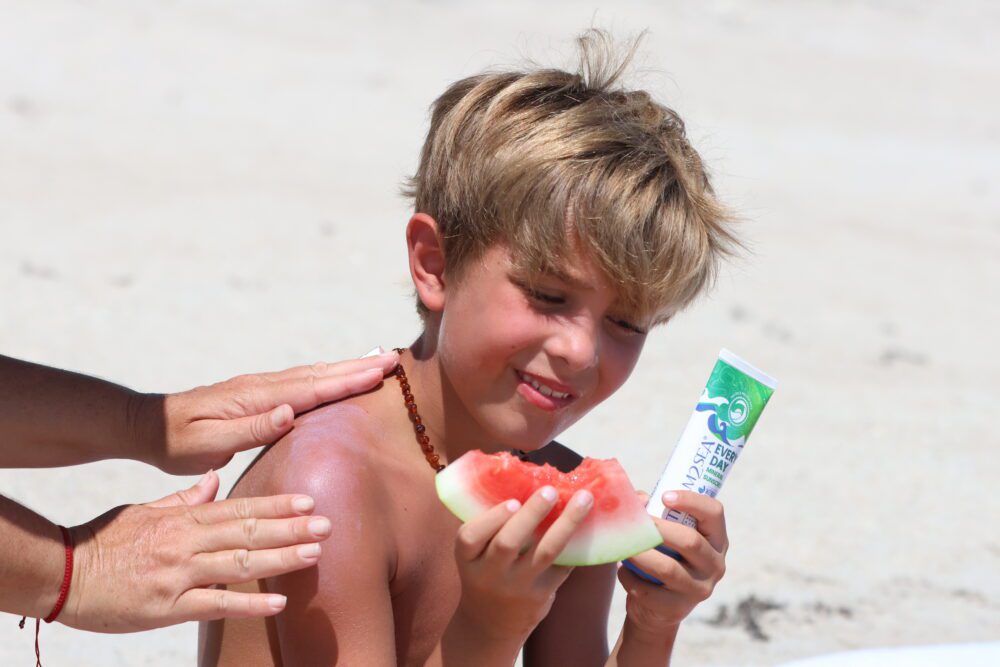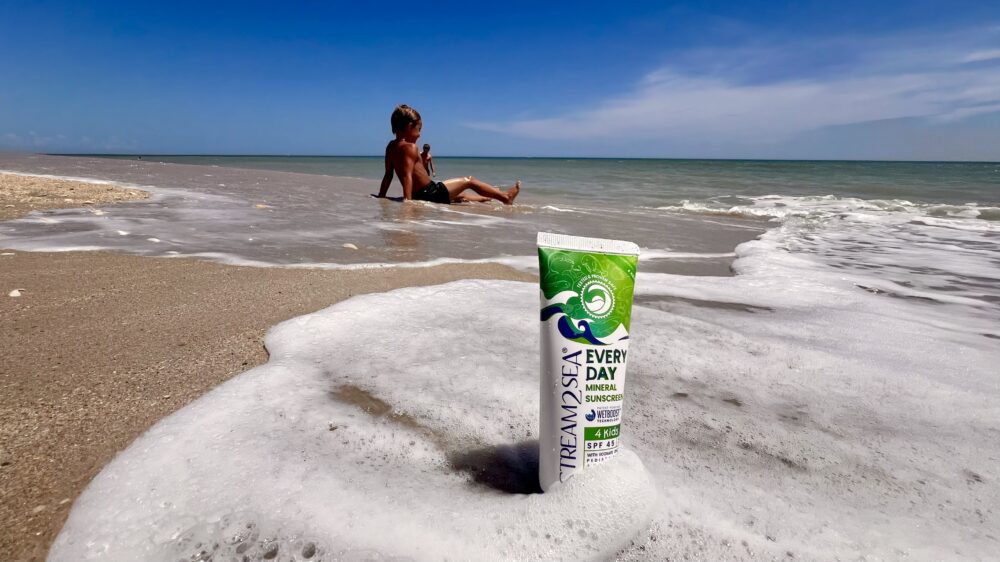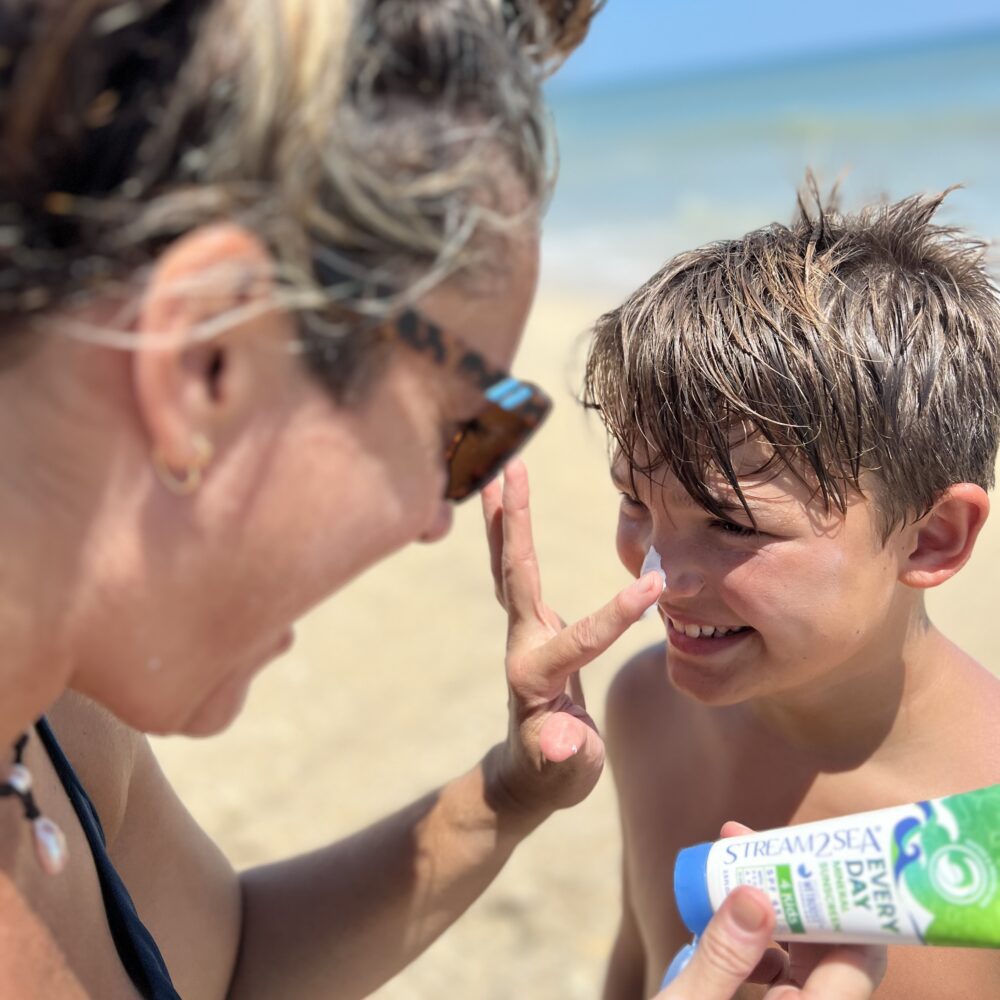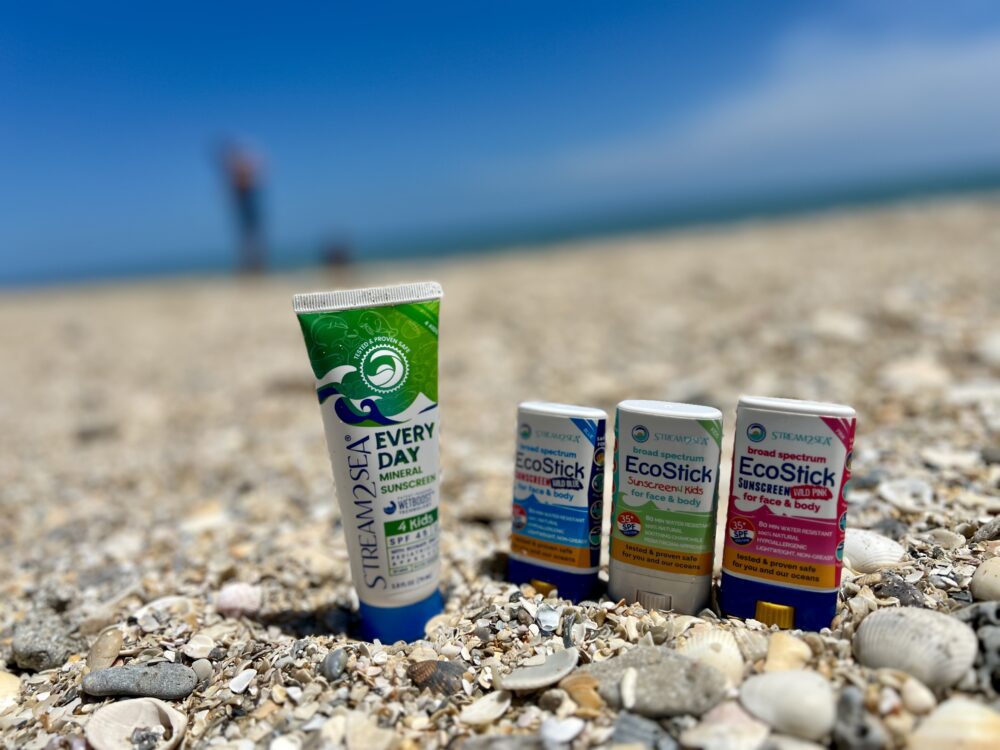Summer may be nearly over, but children should wear sunscreen to school on days with UV levels of 3 or higher. The American Academy of Dermatology (AAD) recommends that all children wear sunscreen with an SPF of 30 or higher, regardless of their skin tone. Sunburn in childhood has been linked to a higher risk of developing skin cancer, which is one of the most preventable cancers.

In the meantime, other researchers are uncovering new links between those fast-absorbing chemical sunscreens and a wide assortment of maladies, all of which are likely magnified in children who are exposed to those petrochemicals on a daily basis beginning at a very young age.
But before you load up that backpack, check out the research showing that petrochemical sunscreens aren’t as safe as their manufacturers would have you believe. In fact, the FDA requested safety data on those ingredients in 2019 when their scientists documented how quickly they were absorbed into volunteers’ bloodstreams. Manufacturers still haven’t provided that data – so the FDA has revoked the GRASE (generally recognized as safe and effective) status for every single petrochemical ingredient.

Oxybenzone
Once found in nearly all sunscreens sold in the US, its use has dropped dramatically although it is still found in about 50% of sunscreens. Oxybenzone is widely recognized as an endocrine disruptor, directly impacting both children and adults by mimicking estrogen, interfering with testosterone and disrupting adrenal glands. A recent report shows that adolescent boys with high levels of oxybenzone had lower testosterone levels, and may increase the risk of breast cancer and endometriosis in women.
Butyloctyl salicylate
Often found in mineral sunscreens, its listed as an inactive ingredient because it hasn’t been approved by the FDA. Butyloctyl salicylate minimizes the redness caused by the sun but provides no real protection against the damage UV rays cause. It’s also chemically related to aspirin (acetyl salicylic acid), which shouldn’t be used by pregnant or nursing mothers, or children who weigh less than 100 pounds.
Octocrylene
An SPF booster, octocrylene can cause allergic reactions in both children and adults. Like many petrochemicals, it’s an endocrine disruptor that can affect estrogen levels. Octocrylene has been shown to chemically generate benzophenone, listed as a mutagen, endocrine disruptor and possible carcinogen. Disturbing concentrations of octocrylene have been found in seafood that humans consume.
Avobenzone
Often used to replace oxybenzone in “reef-safe” formulas, avobenzone is chemically related to oxybenzone and has similar risks. A recent study also suggests that avobenzone functions as a metabolic disrupting obesogen, causing the body to produce more fat than it normally would.
Octinoxate/Octyl Methoxycinnamate
Although commonly used as a UV filter, octyl methoxycinnamate — more commonly known as octinoxate – is easily absorbed through the skin and has been found in human urine, blood and breast milk. It is recognized as a potent endocrine disruptor in humans because it lowers hormone levels in reproductive and thyroidal tissues.
Homosalate
Raising enough issues that the European Union has recommended a maximum concentration of just 1.4%, homosalate can be used at up to 15% in the US. It is a UV absorber that helps sunscreen ingredients penetrate the skin. It bio-accumulates in the body faster than it can be eliminated and is considered a hormone disrupter.

Final note for Mothers:
And one final note for mothers who may be planning another baby: Oxybenzone has been implicated in Hirschsprung’s Disease, a birth defect in which nerves are missing from parts of the intestine. A recent report from Dr. Craig Downs at Haereticus Environmental Laboratory – who led the team proving that oxybenzone is toxic to coral reefs in minuscule concentrations – shows medium to high levels of oxybenzone in a mother’s urine was associated with this congenital defect. He also demonstrated that exposure levels under normal conditions of sunscreen use can cross into the mother’s blood at high enough levels to impact an embryo.

Good Choices for a Sustainable Future
As you prepare your family for their school year, consider the implications of your sunscreen choices. With growing concerns about the safety of petrochemical sunscreens and their potential health risks, especially for children, switching to mineral sunscreens could be a safer alternative. Mineral sunscreens offer effective protection without the worrisome chemicals that absorb into the bloodstream. By opting for these safer products, you’re not only safeguarding your family’s health but also contributing positively to the environment by reducing chemical exposure that harms marine life. Make the switch today and enjoy peace of mind knowing that you’re making a healthier choice for your loved ones and the planet.